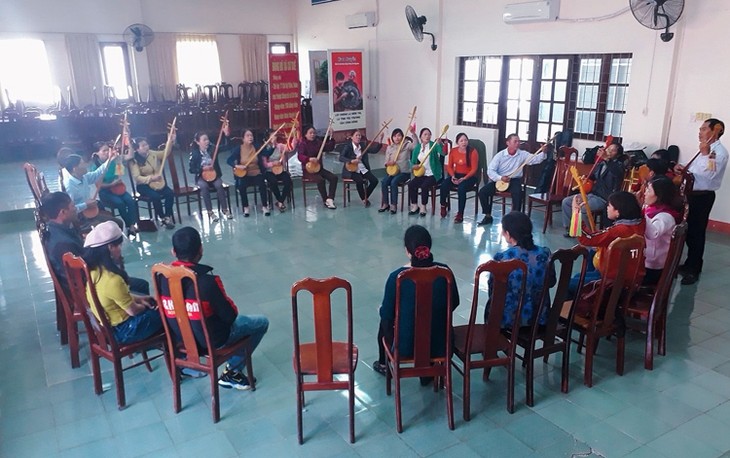(VOVWORLD) - Then singing and the Tinh musical instruments have long been an inseparable part of spiritual life of Tay and Nung ethnic peoples in the northern provinces of Cao Bang, Bac Kan, Ha Giang, and Tuyen Quang. When they moved to different areas to settle down, they brought their unique customs. A number of Then singing clubs have been established across Vietnam, nurturing the souls of many Tay and Nung ethnic people living away from their hometowns.

Members of the Central Highlands' Then singing club are Tay and Nung ethnic people from Vietnam's northern provinces.
|
A Then singing club was established in the Central Highlands province of Dak Lak in 2013 with 13 members of Tay and Nung ethnic people of all ages who resettled in Dak Lak in the 1980s and 90s. They often gather to practice sli and luon singing and play the Tinh musical instrument to ease their homesickness.
76-year-old Hoang Van Thanh of the Nung ethnic minority in Cao Bang moved to the Central Highlands to live with his kids many years ago. Every month, he rides his motorbike a long way from Cu Kuin district to Buon Me Thuot City to practice Then singing with the club and play the Tinh instrument.
"Already at my old age and as a Nung ethnic, I think I should be able to sing Then and play the Tinh instrument. It took me about 3 years to learn the Tinh. I love creating new verses about my community. I have written 6 new Then songs about the close bond between the northern region and the Central Highlands during the resistance wars and the national construction period," said Thanh.
 Club members often gather to practice Then singing and Tinh playing. Club members often gather to practice Then singing and Tinh playing. |
There are around 50,000 Tay and Nung ethnic people living and working in the Central Highlands.
"Our club is newly established and due to its location away from the original places of Then singing, it’s difficult for us to collect ancient verses. Our younger generations also lack proper knowledge of Then singing as well as Tay and Nung ethnic cultures, making it more difficult for us to promote the art form," said Dam Duc Chinh, Head of the Then Singing and Tinh playing club in Buon Me Thuot City.
"We’re building teaching plans for the young people to help them better understand and be more aware of protecting and promoting Tay and Nung ethnic cultures in the Central Highlands," he added.
Some members of the club can teach others to sing Then while others can make the Tinh instrument. Once a month, they gather to practice and share their common concerns. They even created their own fanpage to stay in touch and get connected with other Tay and Nung ethnic groups in Ho Chi Minh City, southeastern regions and northern regions of Vietnam.
"I hope that one day the sounds of Then singing and the Tinh musical instrument will echo all over the Central Highlands. We hope that our Then singing will be on a par with the Gong culture of the Ede ethnic in festivals here. This can only be done with the support and encouragement from authorities," said Luan Thi Lien, Head of the Then singing club at Buon Ma Thuot City’s Center of Culture, Sports and Tourism.
In 2019, “Then” practice of Vietnam’s Tay, Nung, and Thai ethnic groups was named on the UNESCO list of Intangible Cultural Heritages of Humanity.